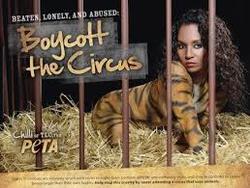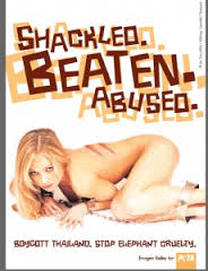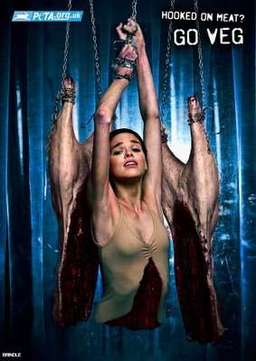
Keuka College
Shortly after joining the faculty at Keuka College as an assistant professor I joined the campus Gender Education and Advocacy Committee. The committee includes students, staff, and faculty working on a wide range of issues including gender-neutral restrooms, Trans 101 trainings, and gender inclusive housing. This committee, along with on-campus student organizations, both PRIDE and the LGBTQA+ Resource Center paved the way for organizational change. But change tends to feel slow, uneven, and unsteady, especially to those most invested. This post is about student-driven efforts to secure gender inclusive on-campus housing at a small, rural, private college.
I was trained in the pedagogical tradition of Paulo Freire and bell hooks. We can’t engage in a disembodied, critical, feminist, liberatory education. We must recognize embodiment and embodied experiences. But, as teachers, where do we start? Powerful memoirs by transgender, genderqueer, and gender nonconforming people have provided rich insights (Bornstein 1994; Mock 2014). A small cache of studies provides a systematic glimpse into how cisgendered people think and feel about transgendered people (Carroll et al. 2012; Norton & Herek 2012; Woodford et al. 2013). But what is the experience of embodying difference as a college student on a small, rural campus? How does place and space impact embodied experiences? We have to ask our students these questions.
I teach in an applied sociology program. Despite various challenges, we train our students to uncover, analyze, and utilize mechanisms for change. While we discuss many structural and broad societal changes in my classrooms, it is incredibly fulfilling to see students develop interventions for more manageable social problems directly related to their everyday lives. My student, Indigo, did an enormous amount of work for an independent study I designed in the fall of 2015, Sociology of Gender and Transgender. Their experience working towards changing campus policy provides an example of how our classes can facilitate an exploration of embodiment, and social change.
In the last third of the semester, after extensive readings, a detailed annotated bibliography, and numerous individual meetings, Indigo began their final project. We discussed more traditional options all semester, but Indigo, and a number of other students on campus, are passionate about creating gender inclusive housing on campus. After witnessing the success of instituting a number of unisex bathrooms on campus, a step to alleviate distress for people who don’t conform to gender norms yet are forced, due to a lack of options, to use either “male” or “female” bathrooms, the focus turned to other spaces that could shift from concretely dichotomous gendered spaces to more inclusive ones.
Indigo worked with the available committees and clubs on campus to press forward with this initiative during their three years in college. Gender Inclusive housing on college campuses give students the option to live in campus housing that includes students of a variety of gender identities. For a fairly comprehensive list of gender inclusive (alternately called gender neutral housing) housing issues please visit this collection of articles at The Huffington Post. Often, colleges select a house, dorm, or hall that is gender inclusive, leaving exclusively “male” and “female” housing options for students as well. Before moving forward, administrators on our campus wanted more information, and rightly so. Indigo identified the next step, a campus climate survey. These surveys are used to establish a baseline of student perceptions of and experiences with the climate for transgender students on campus. Indigo modified an existing survey used by the Gender Education and Advocacy Committee, administered the survey, and later conducted data analysis with the assistance of their peers working in the LGBTQA+ resource center. The survey results were a turning point in their project. Two hundred and eighty one students responded to the survey and 81 percent indicated support for gender-inclusive housing.
With the survey results, Indigo set out to inform the campus. They presented the survey results at a student senate meeting, a meeting with the interim director of campus residential life, a town hall- style meeting attended by the college president, vice president, and other administrators, and was then invited to meet with the college dean of students about the results. Indigo followed up by creating a formal proposal for gender inclusive housing, presented to the president for consideration by the college cabinet. At ever step, Indigo encountered interest, support and a willingness to explore options for moving forward.
This is where I’d like to stop and note that the work Indigo completed, as part of an independent study, is extraordinary in a number of ways. Their ability to use a number of different skill sets, identify a problem on campus, research the problem, modify a survey tool to measure student perceptions, analyze data, present that data in a number of public forums, and complete a formal proposal goes above an beyond most final projects and papers. What is also extraordinary is that they were able to speak directly with student leaders, administrators, faculty and staff, to have a voice. This processes, and the responses to their work are incredibly valuable. It is a model for ensuring that students know they are essential and valued within the campus community.
The issue of gender inclusive housing on our campus is not decided. It is a process that will take time. However, as a part of a broader curriculum, this project’s success isn’t just about outcomes. Indigo and other students faced distinct challenges when their embodied, day-to-day experiences left them feeling marginalized and at times unsafe. Through all their work on campus, and this course project, Indigo became a central part of a community pulling together to make life more equitable. All institutions and organizations, created by social actors and myriad social forces, institutionalize bodies. Interventions, like Indigo’s indicate how important it is to teach and support student work that promotes social justice in tangible ways.
Acknowledgments: I’d like to thank Indigo for giving me permission to write about their final project.
References
Bornstein, Kate. 1994. Gender Outlaw: On Men, Women, and The Rest of Us. New York: Rutledge.
Carroll, Lynn, Dominkik Guss, Kimberyly S. Hutchinson, and Andy A. Gauler. 2012. “How do U.S. Students Perceive Trans Persons?” Sex Roles 67(9/10):516-527.
Mock, Janet. 2014. Redefining Realness: My Path to Womanhood, Identity, Love & So Much More. New York: Simon & Schuster.
Norton, Aaron T. and Gregory Herek. 2013. “Heterosexuals’ Attitudes Toward Transgender People: Findings from a National Probability Sample.” Sex Roles 68(11/12):738-753.
Woodford, Michael R., Brittanie Atterberry, Matthew Derr, and Michael Howell. 2013. “Endorsement for Civil Rights for Lesbian, Gay, Bisexual, and Transgender People Among Heterosexual College Students: Informing Socially Just Policy Advocacy.” Journal of Community Practice 21(3):203-277.






 RSS Feed
RSS Feed
